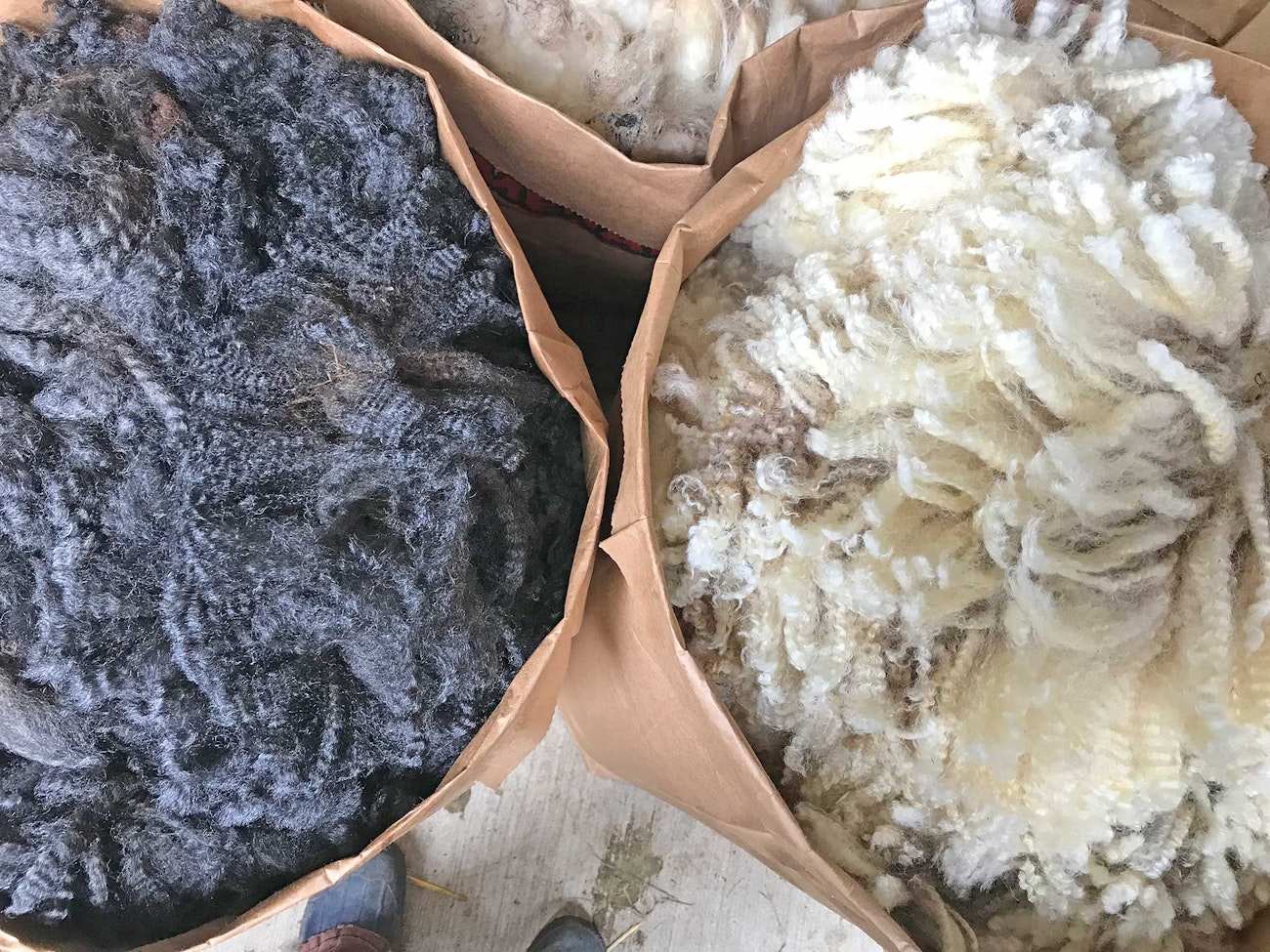As winter comes to an end on my Midwestern farm, all thoughts and excitement and worry are focused on the pregnant ewes. My flock of Border Leicester sheep—a breed known for their gentle intelligence and shiny, curly locks—have their lambs in April each year.
Sheep have a gestation of about five months, and my ewes (and I) spend about four of those months blissfully unconcerned about the coming lambs. The ewes spend their winter days cozy in full fleece, oblivious to either windy, freezing conditions or damp, dreary days. By early March, we all start to be aware that spring is right around the corner. The first ewes start to show, and their shepherd quickly shifts gears—it’s time to make lists and start planning.
If the weather is kind, I like to shear my ewes before they lamb. It makes it easier for the lambs to find their mother’s milk, as well as allowing the ewe to easily see the lambs. We’ve had cold, wet springs for the last few years, so some of the ewes lambed before they were sheared. Occasionally, lambs need to wear a little coat for a few days as they adjust to the outside world.
Get a closer look! Click the video or any image in the gallery below to open it in full-screen mode.
Molly had her twins, Willa and Gus (shown in the video), while it was still quite cold in 2022. Willa needed some extra help and wore a woolly coat sewn from the sleeve of a thrift-store sweater for a few days.
Watching the sheep learn and process information is just about my favorite part of having a flock. Much of what the ewes need to know about lambing is instinctive, but I’ve also found that keeping yearling ewes (last year’s lambs) near the pregnant ewes is a great help. For example, Willa as a yearling was able to see, hear, and smell all the goings on of lambing season last year, making those things less of a shock when it’s her turn. (Learn more about her here.)
Are We There Yet?
Willa seems like she might lamb before everyone else in the coming weeks. My fellow shepherd—my husband, Olaf—and I sheared her and a few of her pregnant peers today, a warm and sunny afternoon. I packed the fleeces away into paper bags until I have a chance (after lambing season) to sort the wool for further processing.

Kate’s flock has both white and natural color Border Leicesters.
Tonight, I’ll begin my midnight barn checks. As lambing season gets closer, Olaf and I start checking the barn more frequently to make sure none of the ewes is in distress. These late-night/early-morning walks to the barn, while watching the stars and pulling various layers of handknitted sweaters and shawls more tightly around my pajamas, have become a sacred feature of the changing season for me. I creep into the barn, tiptoe around the sleeping flock, and check on the ewes closest to their time. They might be sleeping soundly, giving birth without any need of my assistance, or in a dire situation that requires me to snap fully awake and spring to action. The not-knowing fills this season with the sharpest joy and worry and excitement and trepidation.
Ah, the shepherd’s life. All I can do for now in this time of great expectations is double-check my cabinet of lambing supplies I hope I don’t need for a 3 am emergency:
Lamb coats, check.
OB gloves, check.
Milk replacer and bottles, check and check. . .
Get a closer look! Click any image in the gallery below to open it in full-screen mode.
Willa had a beautiful fleece this year, and she’s feeling fresh and clean now that she is shorn.
Kate Larson, editor of Spin Off, teaches handspinning around the country, has published knitting patterns in books and magazines, and spends as many hours as life allows in the barn with her beloved flock of Border Leicesters.

